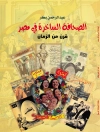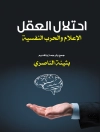Advances in audiovisual technology, most notably the advent of the popular usage of digital technology in the last few years, have altered the face of popular television. Thanks to cable, satellite and now digital technology, television broadcasts can reach an international audience. The reaction from cultural critics has been mixed. As the debate concerning the effects of new telecommunications and audiovisual technology continues unabated, this book examines the underlying hypothesis that collective allegiances are moving away from the national paradigm towards the global/local model and provides a balanced appraisal of the depiction of a select number of group identities on television in Britain and France.
विषयसूची
Chapter 1. Fragmentation of the Nation: National Identity and Television in France and Britain at the Turn of the 20th Century
M. Scriven and E. Roberts
Chapter 2. Adjusting to Diversity
J-C. Sergeant
Chapter 3. Constructing the National: Television and Welsh Identity
K. Williams
Chapter 4. Changing Expectations: Holyrood, Television and Scottish Identity
A. Scullion
Chapter 5. Storm Clouds of the Millennium: Regional Television News in Aquitaine and the West of England
M. Scriven and E. Roberts
Chapter 6. The Representation of Maghrebis on French Television
J. Helcké
Chapter 7. From Comic Asians to Asian Comics
M. Gillespie
Chapter 8. Curiosity, Fear and Control: The Ambiguous Representation of Hip-Hop on French Television
C. Warne
Chapter 9. Green Activist Identities on British Television
D. Wall
Chapter 10. Going out to the Straight Community: Televisual and Heteronormative Logics in Representations of Homosexuality
M. Pratt
Chapter 11. Televisual Identity in the 21st Century: Constructing the Post-modern Group
M. Scriven and E. Roberts
Annex I: Interview with Akli Tadjer
Annex II: Interview with Nina Wadia
Bibliography
Index
लेखक के बारे में
Emily Roberts is a Research Associate in the Department European Studies at the University of the West of England, Bristol.












